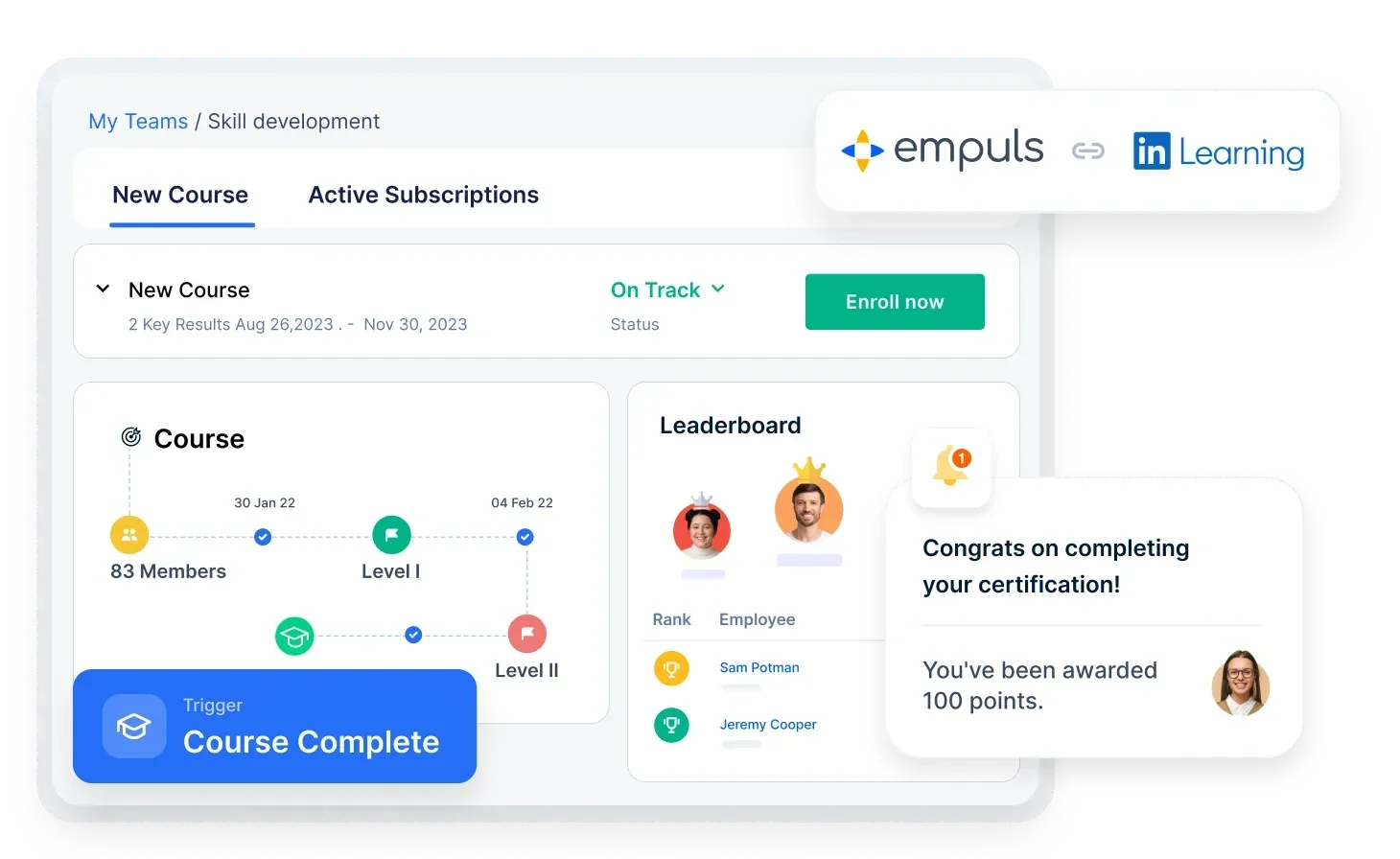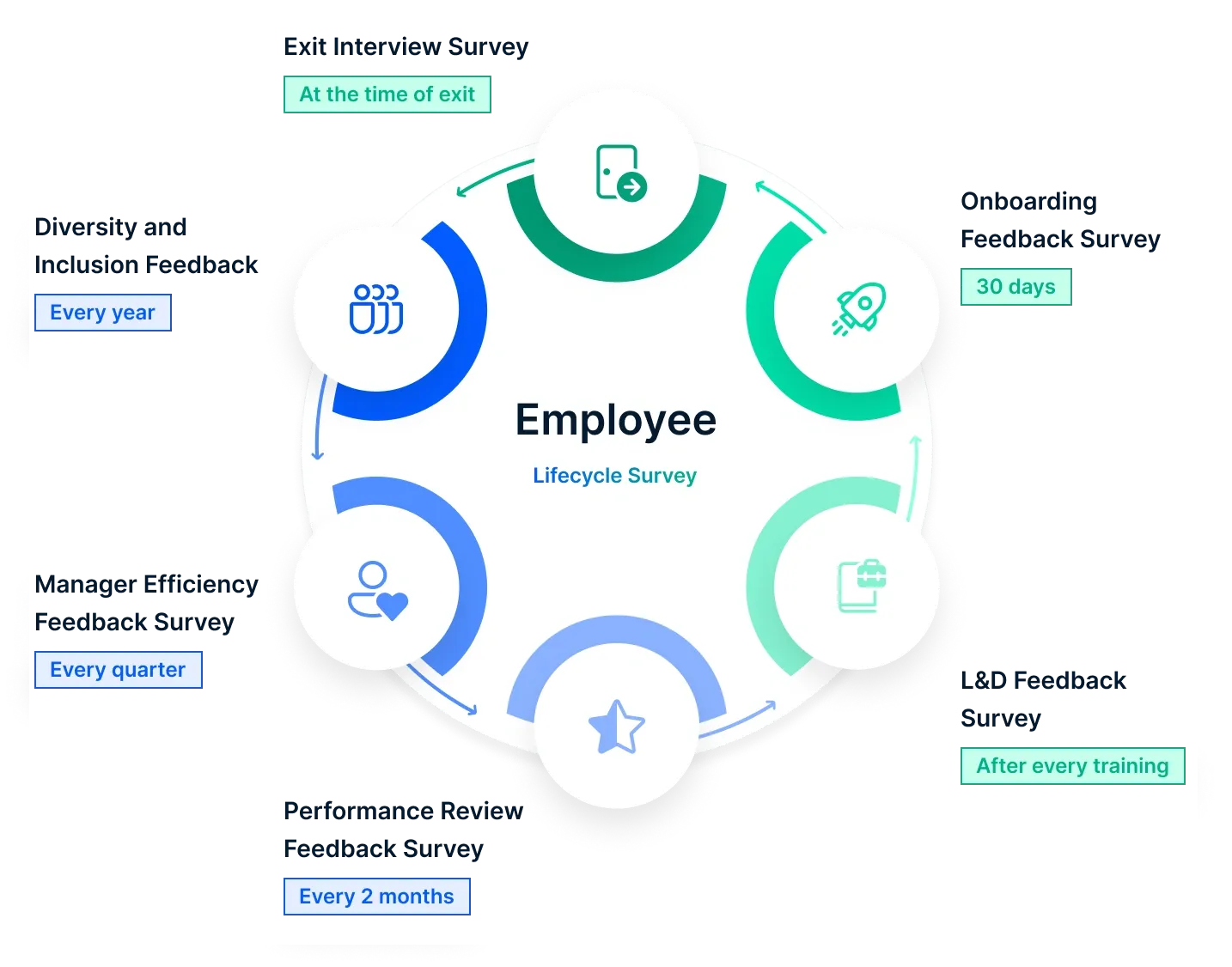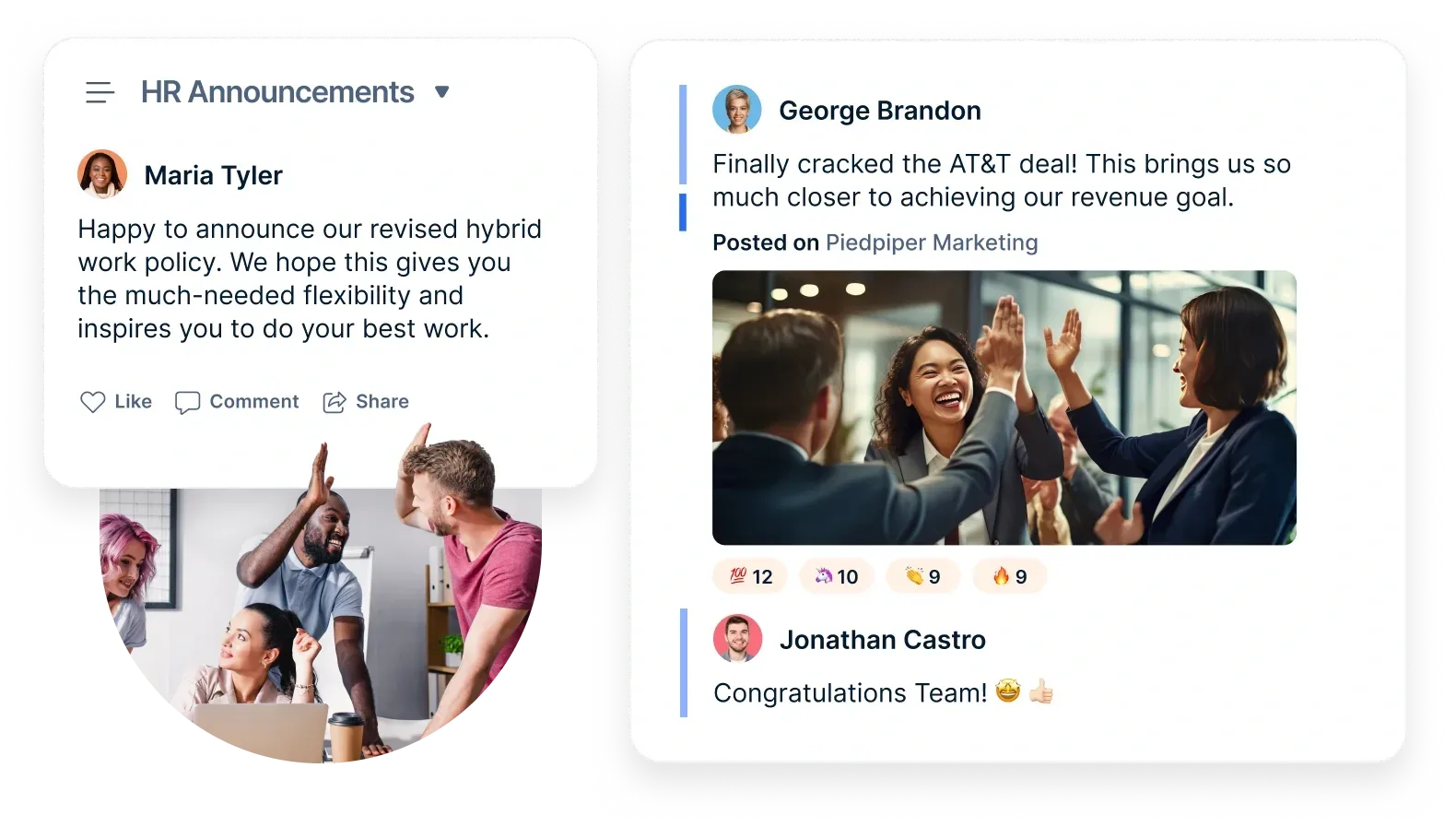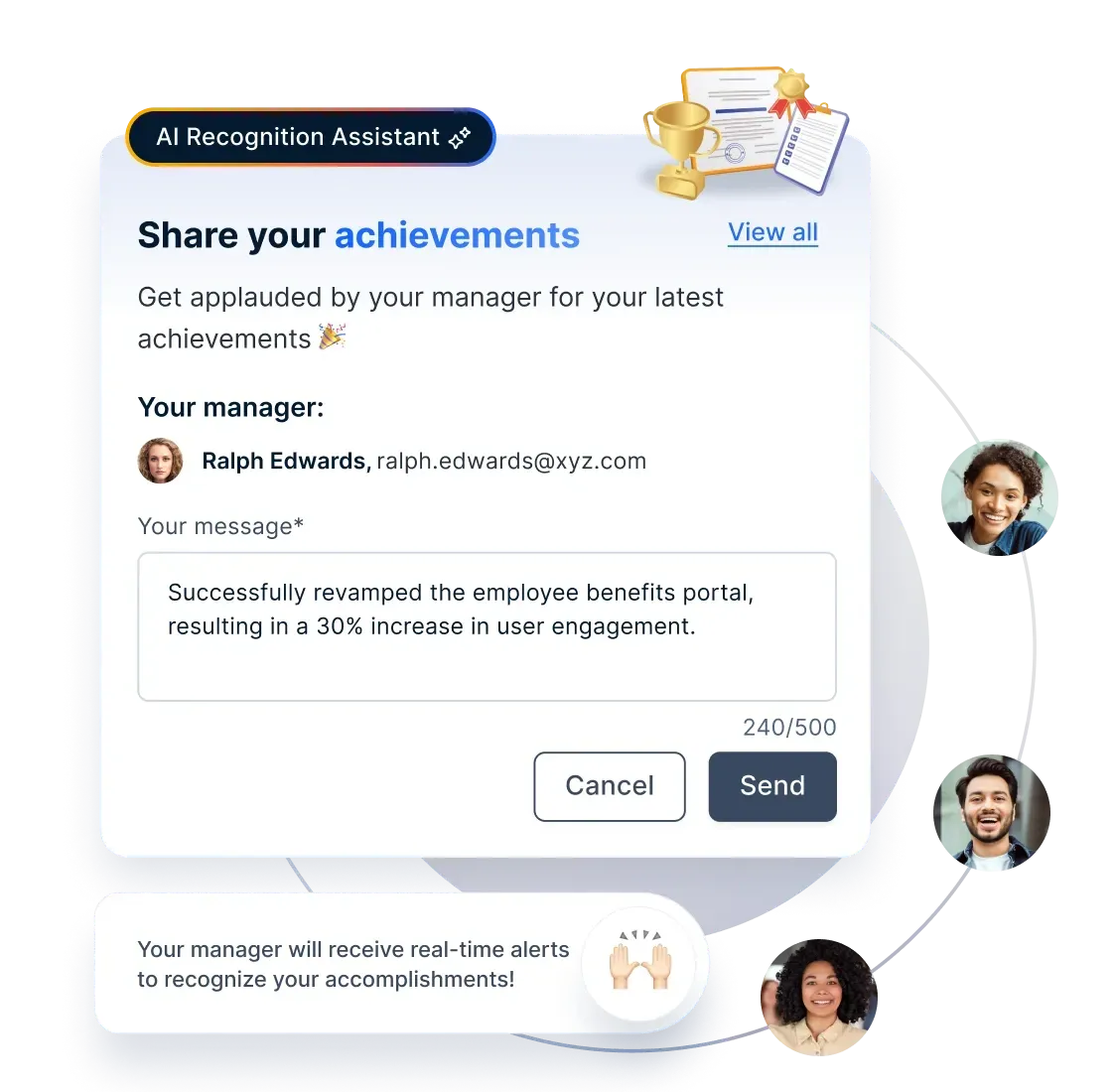Employee Engagement in Times of Crisis: What Really Works
In challenging times, employees need support more than ever. This blog shares actionable strategies to improve employee engagement in times of crisis using transparent communication, low-cost initiatives, learning, and tools like Empuls.
On this page
- Transparent communication: The foundation of crisis engagement
- Learning and development as a strategic retention tool
- Navigating restructuring with empathy and transparency
- Recognition as a retention lever during uncertainty
- Empuls in action: Enabling crisis-ready engagement
- Conclusion: Building a culture that endures crisis
In uncertain times, employees look to their organizations not just for direction, but for reassurance. When crises hit— economic downturns, public health emergencies, or large-scale restructuring—people naturally shift into survival mode. Trust starts to waver, motivation dips, and questions about job security rise quickly.
This is precisely where employee engagement becomes more than a buzzword. It becomes a necessity.
Engagement during a crisis isn’t about grand gestures but consistent, honest communication and empathetic leadership. It’s about ensuring that every employee, on-site or remote, feels informed, heard, and valued. And most importantly, it’s about showing people that even in tough times, they matter.
Done right, engagement strategies during a crisis won’t just stabilize your workforce—they’ll create a stronger, more connected culture that outlasts the chaos.
Transparent communication: The foundation of crisis engagement
One of the most common mistakes organizations make during a crisis is waiting too long to communicate. Silence creates room for speculation—and speculation creates fear. The absence of clarity can quickly spiral into a breakdown in trust, as employees begin to fill in the gaps with worst-case assumptions.
Take, for example, a situation where one arm of a global company announced restructuring in the U.S., but failed to update its team in India. As news trickled in through informal channels, employees in the Indian office were left guessing about their own job security. The lack of acknowledgment from local leadership caused anxiety, withdrawal, and a complete drop in morale. Employees stopped responding to customer calls, and the disruption quickly escalated.
This kind of panic is preventable with timely, honest, and consistent communication.
Leadership and HR teams must proactively address what’s happening, even when all the answers aren’t available. A simple message acknowledging uncertainty and outlining possible next steps is far better than vague silence.
Tools like Empuls play a key role here. It allows organizations to create dedicated communication channels for real-time updates, leader messages, and crisis alerts. Sharing facts, stats, and preparedness plans through a centralized platform helps reinforce transparency and reduce fear. Employees get visibility into the bigger picture, which builds the confidence they need to stay focused during disruption.
Whether it's a restructuring, a policy shift, or an industry-wide slowdown, clear communication is the first step to keeping your people grounded.
Learning and development as a strategic retention tool
During a crisis, businesses tend to focus on cutting costs. While caution is necessary, overlooking employee growth can be a missed opportunity. When things slow down, employees often have more bandwidth. This makes it the perfect time to invest in learning and development.
Skill-building during downturns serves two purposes. First, it prepares your workforce for future opportunities. Second, it gives employees a sense of purpose and direction when the outside world feels uncertain. Instead of worrying about what might go wrong, they’re encouraged to focus on what they can build and improve.
Companies like Infosys and MindTree have embraced this approach during slower periods. They upskill their bench employees with training in emerging technologies. This makes them deployment-ready and helps the company adapt faster when business picks up again.
It’s not just about technical skills. Soft skills, leadership development, and internal mobility programs can keep employees engaged and optimistic. It sends a message that the organization believes in its people and invests in their future.
With Empuls, you can promote learning initiatives through internal campaigns and recognize employees who complete new certifications or training milestones. Highlighting these efforts boosts morale and encourages a culture of continuous development, even when things are uncertain.

In a time when external growth is unpredictable, helping employees grow internally is one of the most powerful forms of engagement.
Navigating restructuring with empathy and transparency
Restructuring is never easy. When roles are being reassessed or jobs are at risk, the emotional weight on employees is real. How organizations handle these moments defines how they are remembered — not just by those exiting, but also by those who stay.
Empathy must be at the core of every decision. For employees impacted by layoffs, fair severance, extended healthcare benefits, and outplacement support can make a painful transition slightly more manageable. Companies like GE and Adobe have partnered with outplacement vendors to help outgoing employees find new roles faster. These efforts create a lasting impression, showing the organization values people even in tough times.
But often, the group that gets overlooked is the one that stays. Employees who survive a layoff usually experience guilt, fear, and rising distrust. They may start looking elsewhere, unsure of what the future holds in their current workplace. If left unaddressed, organizations risk losing even their most committed talent.
This is where transparent communication becomes critical. Employees need to know what happened, why, and how the company plans to move forward. They also need assurance that leadership has a plan and is committed to rebuilding trust.
Empuls can support this transition by helping leaders run pulse surveys to gauge sentiment post-restructuring. It can also be used to recognize those who stepped up during the transition or helped support others through it. These small but intentional acts can rebuild morale and create a sense of stability for those who remain.

When handled with empathy, restructuring doesn’t have to break culture. It can strengthen it, one honest conversation at a time.
Recognition as a retention lever during uncertainty
In times of crisis, employees are often stretched thin. They’re working under pressure, managing personal stress, and trying to meet expectations with limited resources. In such moments, recognition becomes one of the most powerful tools a company can use.
When financial rewards are limited, appreciation becomes even more meaningful. A genuine thank-you, a public shoutout, or a simple note acknowledging someone’s extra effort can make a lasting difference. It reassures employees that their work is seen, valued, and appreciated.
Recognition does more than boost morale. It helps anchor people during uncertainty. It reminds them of their importance and reinforces a sense of belonging to the organization. Even small wins need to be celebrated — because every win matters when the stakes are high.
This is where platforms like Empuls play a crucial role. With Empuls, leaders and peers can recognize contributions instantly through digital badges, appreciation walls, and personalized messages. Points-based systems allow employees to redeem rewards, even if they’re non-monetary. You can create leaderboards to gamify engagement and spotlight top contributors during remote or hybrid work periods.
Empuls also helps you tie recognition back to company values. This ensures that the right behaviors are reinforced and that culture remains strong, even if your teams are distributed or working under pressure.

In tough times, recognition is more than a gesture. It becomes a strategy for retention, connection, and resilience.
Empuls in action: Enabling crisis-ready engagement
During disruption, organizations need more than policies—they need systems that keep communication, recognition, and feedback running without friction. This is precisely what Empuls is built for.
Whether you're navigating layoffs, shifting to remote work, or dealing with economic uncertainty, Empuls acts as a central hub that helps HR and team leaders stay connected to their people. It keeps engagement structured, visible, and human, even when the environment is anything but stable.
Here’s how Empuls supports employee engagement in times of crisis:
✔ Real-time communication
Keep employees informed with timely updates from leadership. Use dedicated communication channels to share business continuity plans, policy changes, and safety protocols across teams and locations.

✔ Continuous feedback and pulse surveys
Quickly gather employee sentiment through anonymous pulse surveys. Understand how your workforce feels and take data-backed actions to address their concerns before escalating.
✔ Recognition and appreciation at scale
Celebrate small wins and major milestones with peer-to-peer shoutouts, badges, and points. Recognition can be personalized or value-based, reaching remote and frontline employees equally.

✔ Non-monetary rewards and morale boosters
Run campaigns that reward participation, innovation, or simply showing up with resilience. Even when budgets are tight, Empuls enables point-based recognition, public praise, and leaderboards that reinforce team spirit.

✔ Support for well-being and connection
Use Empuls to launch wellness challenges, gratitude drives, and collaborative campaigns that unite people. These create a sense of normalcy, even when the external environment feels unpredictable.

In a crisis, consistency is key. Empuls helps organizations show up for their employees daily—with empathy, clarity, and recognition. It turns reactive chaos into proactive care and builds a culture that can weather any storm.
Conclusion: Building a culture that endures crisis
Crisis doesn’t just test business strategies. It tests culture. It reveals how much an organization values its people and how far it will go to support them when things get tough.
Employee engagement during a crisis isn’t about grand campaigns or expensive perks. It’s about consistent communication, timely recognition, genuine empathy, and small decisions that show your team you care. When employees feel seen and supported, they stay focused. They stay resilient. And they stay with you.
Whether offering flexible work options, investing in upskilling, or simply saying “thank you” when it matters most, each gesture adds up. And with platforms like Empuls, you can ensure none of these efforts fall through the cracks. You can listen, appreciate, and respond—without delay.
The storm may be out of your control. But how does your team come out of it? That’s in your hands.
Support your team with timely recognition, honest feedback, and meaningful communication—even during crisis. Let Empuls help you build trust and boost morale when it’s needed most.
→ Explore Empuls Today


















